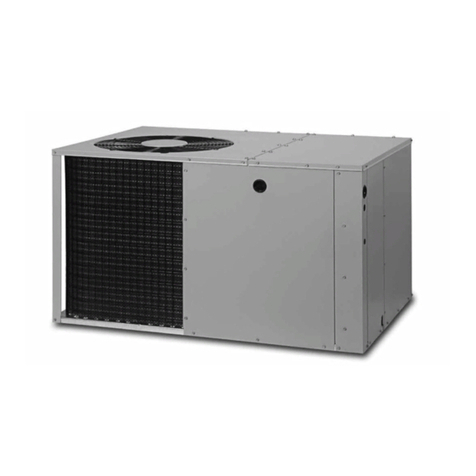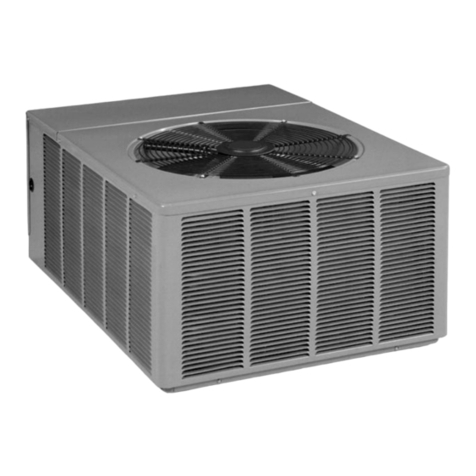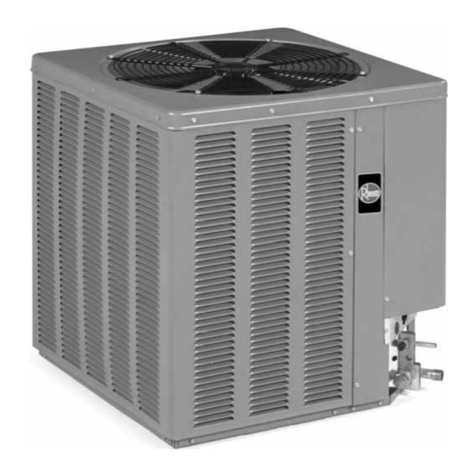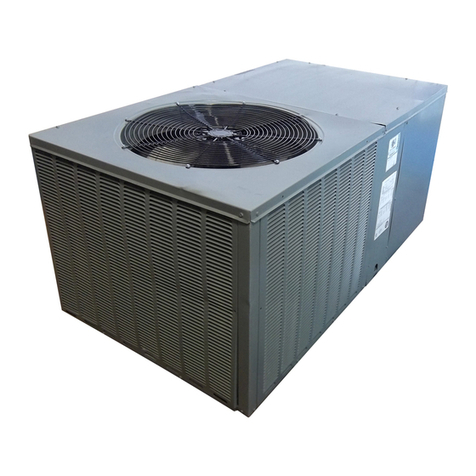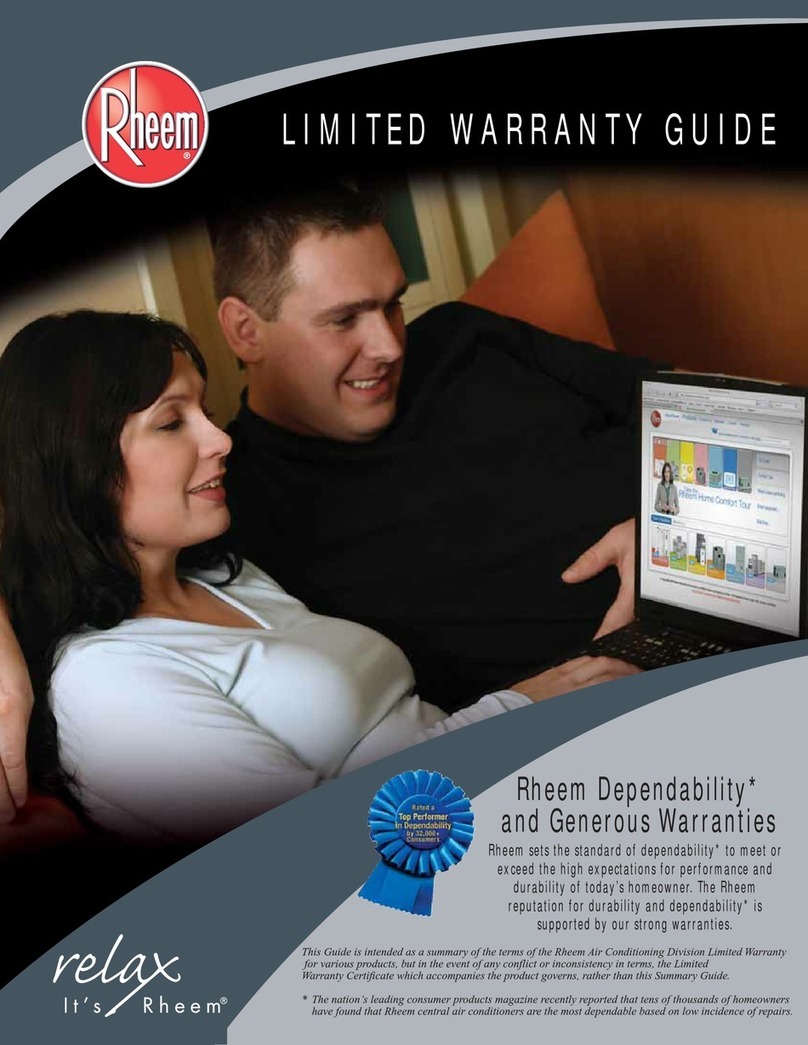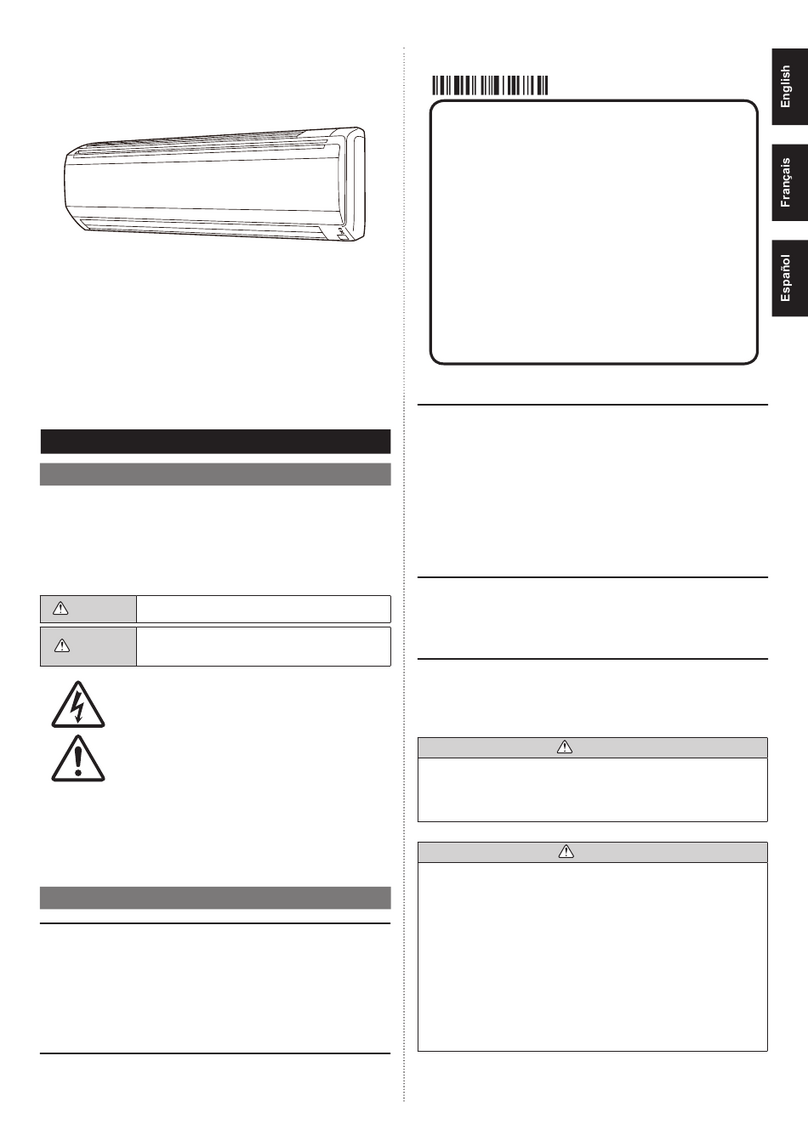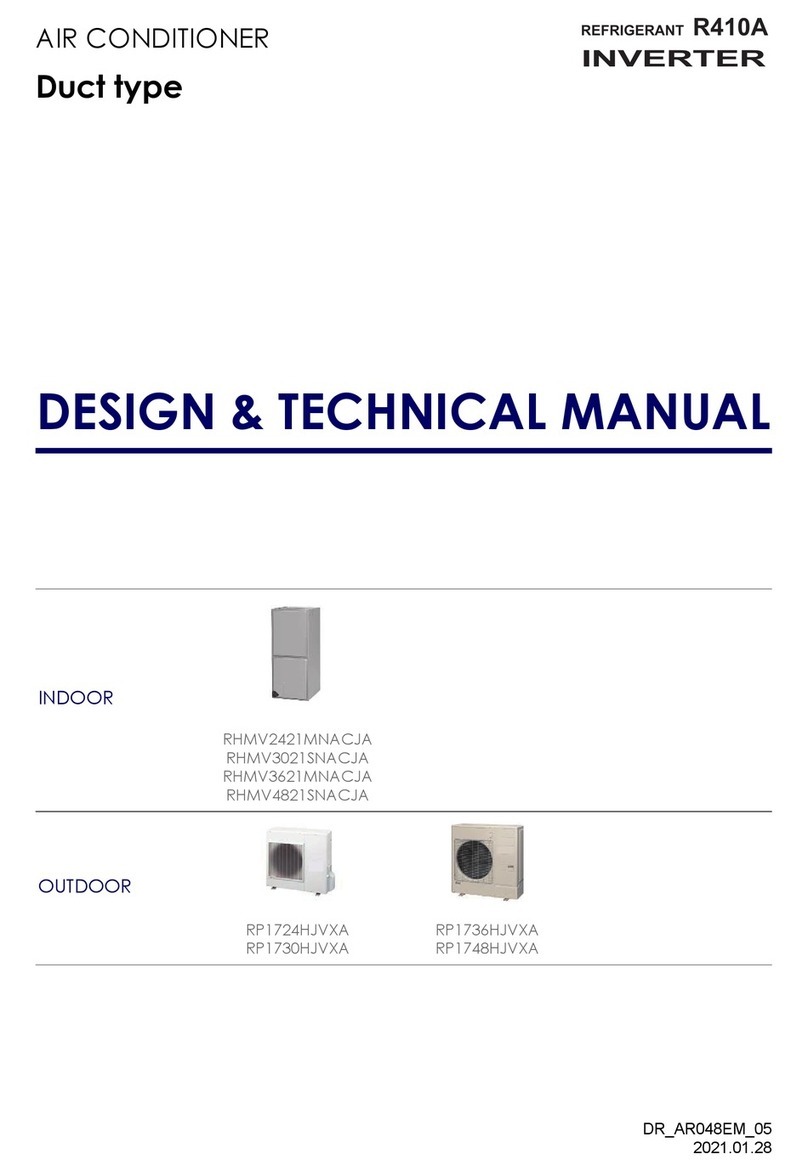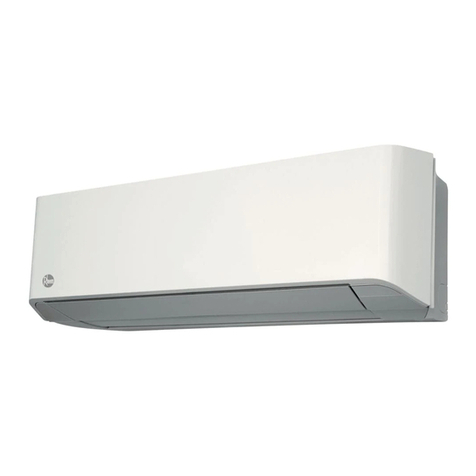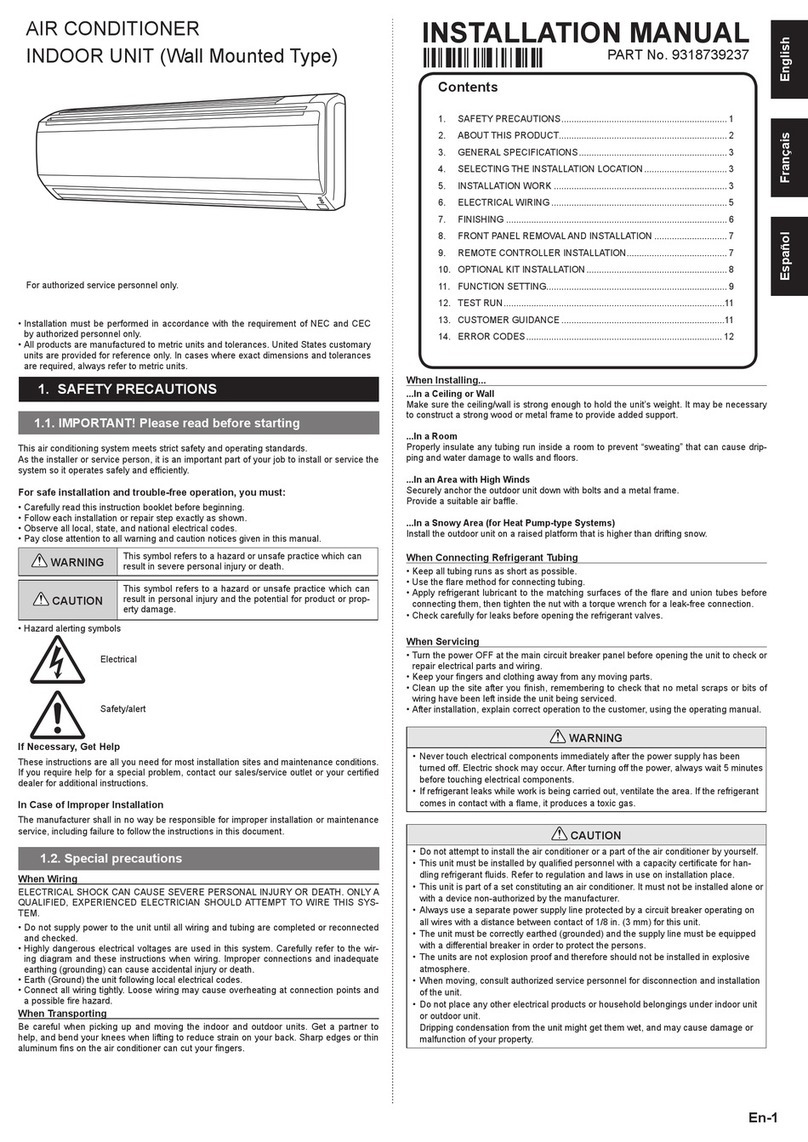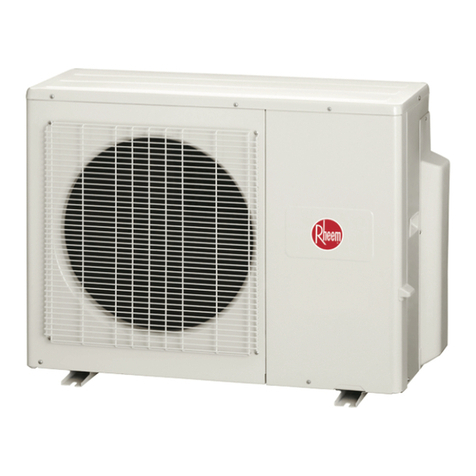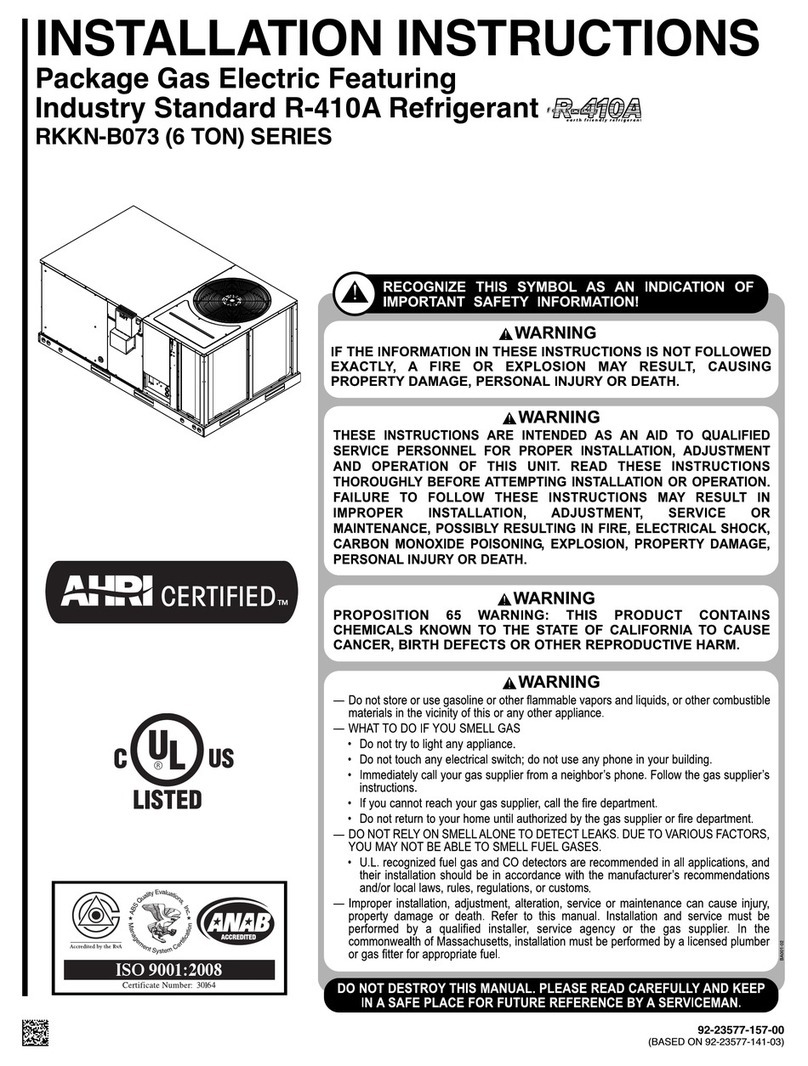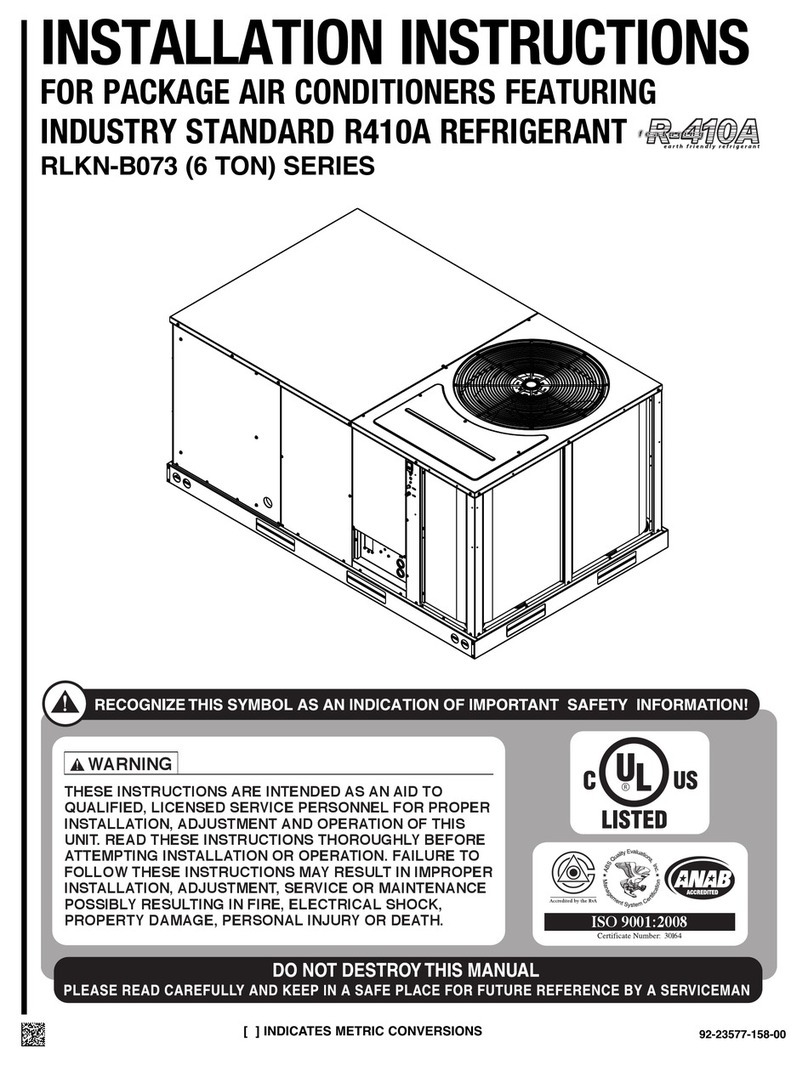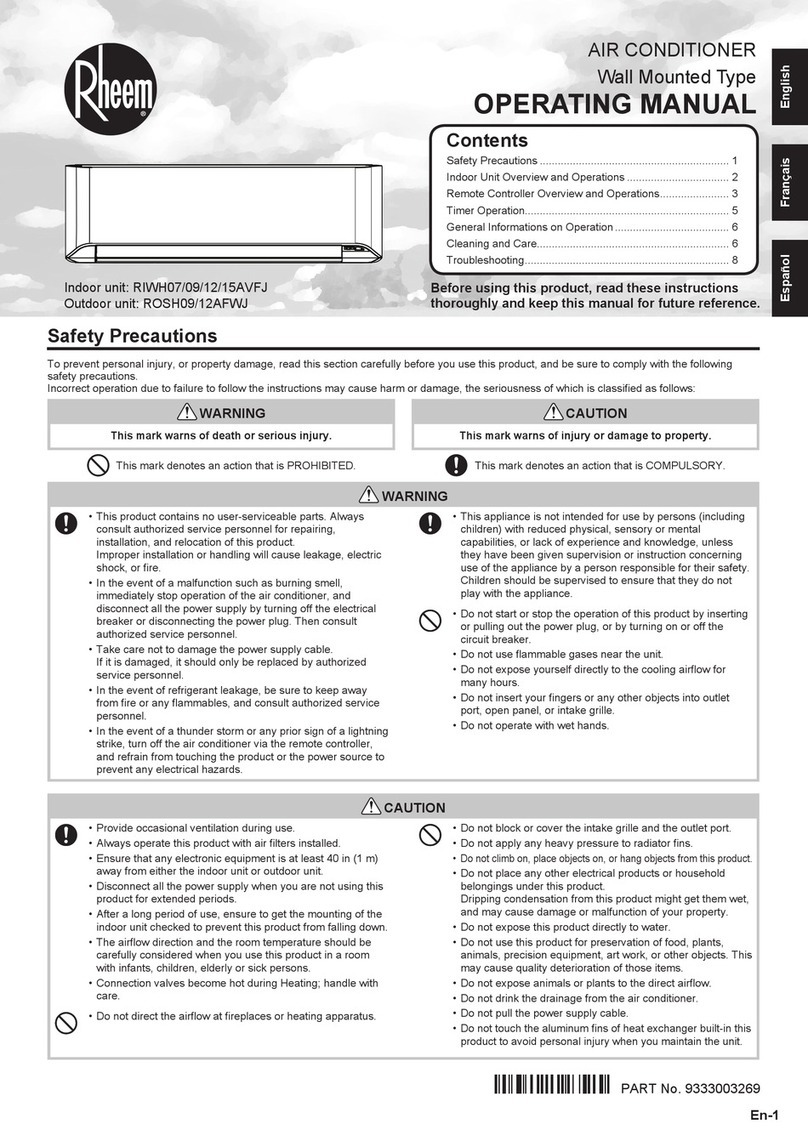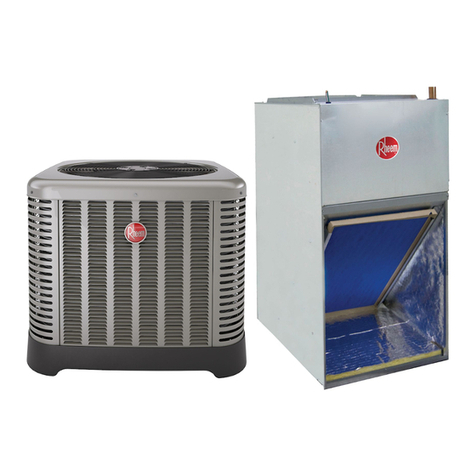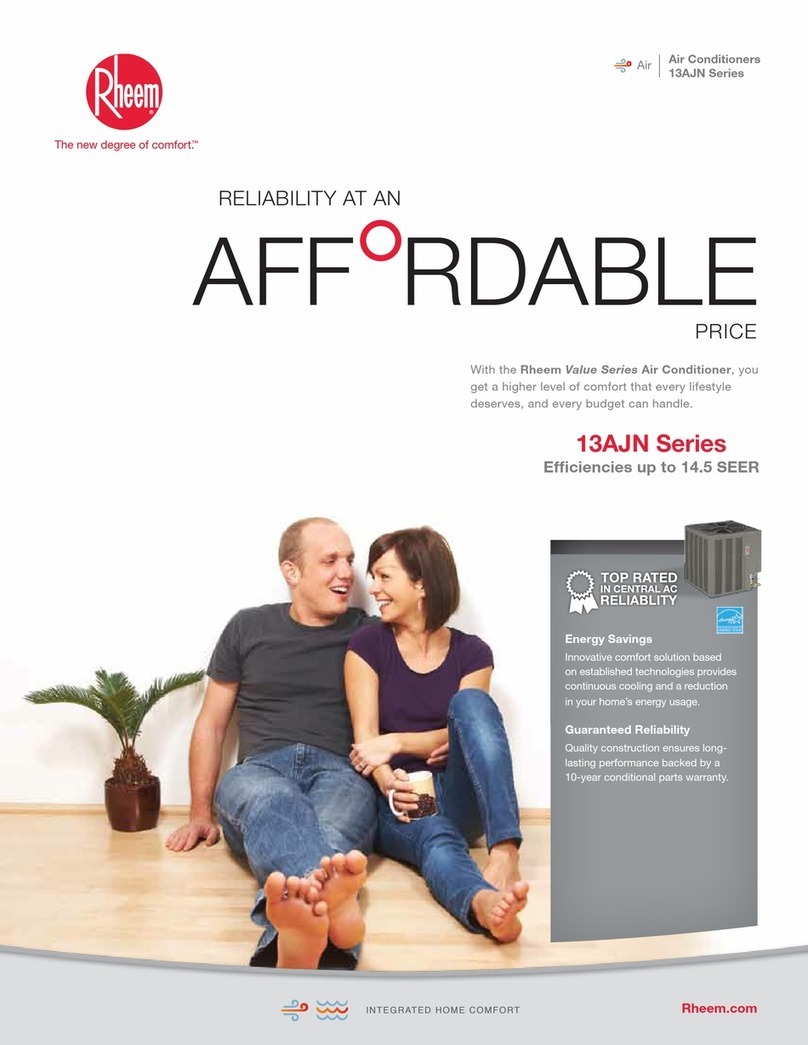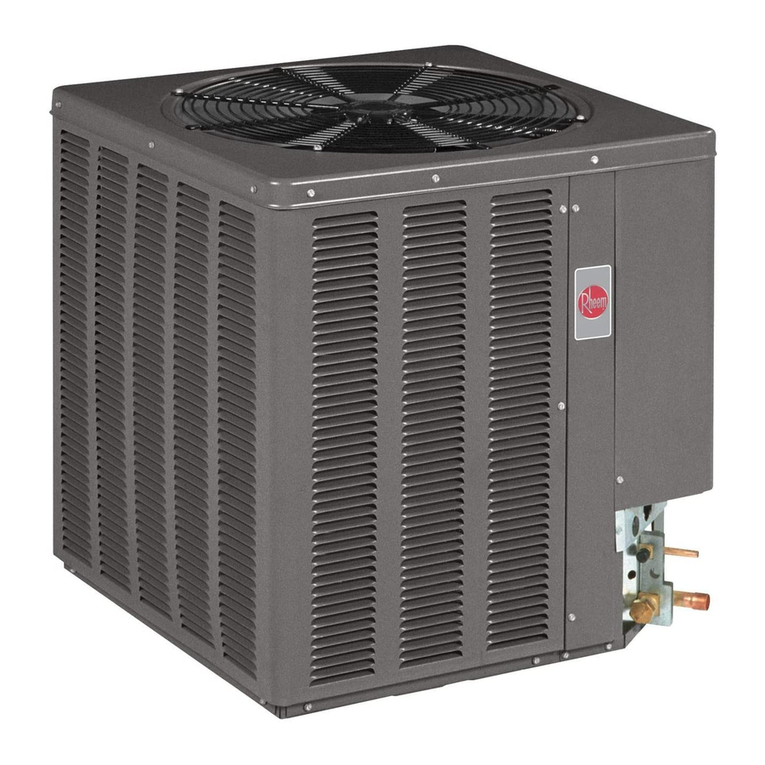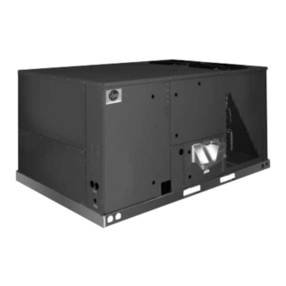
Contents
2
Contents
1.0 IMPORTANT SAFETY INFORMATION ............................................................3
2.0 GENERAL INFORMATION ...............................................................................4
2.1 Introduction ....................................................................................................4
2.3 Importance of Quality Installation..................................................................4
2.4 System Sizing and Selection.........................................................................4
2.5 Importance of Proper Indoor/Outdoor Match-Ups ........................................5
2.6 Checking Product Received ..........................................................................5
2.7 Compressor Break-In Notice .......................................................................5
3.0 UNIT SPECIFICATIONS ....................................................................................5
3.1 Model Number Nomenclature and Available Models....................................5
3.0 UNIT SPECIFICATIONS ....................................................................................6
3.2 Electrical and Physical Data..........................................................................6
4.0 INSTALLATION..................................................................................................7
4.1.1 Tools Required for Installing and Servicing R-410A Models.................7
4.1.2 Specications of R-410A .......................................................................7
4.1.3 Quick-Reference Guide for R-410A ......................................................7
4.1 Tools and Refrigerant.....................................................................................7
4.2 Choosing a Location ......................................................................................8
4.2.1 Allowable Clearances............................................................................8
4.2.2 Operational Issues Related to Unit Location........................................8
4.2.3 Corrosive Environment..........................................................................8
4.2.4 Customer Satisfaction Issues ...............................................................9
4.3 Unit Mounting.................................................................................................9
4.3.1 Unit Mounting Methods .........................................................................9
4.3.2 High Wind and Seismic Tie-Down Methods.........................................9
4.3.3 Elevating Unit ........................................................................................9
4.4 Refrigerant Line Set Selection.....................................................................10
4.4.1 Replacing Existing Systems................................................................10
4.4.2 Line Set Application Considerations...................................................10
4.4.2.1 Oil Return to Compressor ............................................................. 10
4.4.2.2 Refrigerant Migration During Off Cycle........................................ 10
4.4.2.3 Maximum Liquid Pressure Drop ................................................... 10
4.4.2.4 Liquid Line Refrigerant Flashing................................................... 10
4.4.2.5 Oil Level Adjustment for Long Line Set Applications ................... 10
4.4.2.6 Capacity Losses............................................................................ 10
4.4.4 Liquid Line Selection ........................................................................... 11
4.4.5 Vapor Line Selection ...........................................................................12
4.5 Line Set Installation .....................................................................................14
4.5.1 Important Tubing Installation Practices...............................................14
4.5.2 Relative Location of Indoor and Outdoor Units ..................................15
4.5.2.2 Outdoor Unit Below Indoor Coil (Long Line Set Applications)..... 16
4.5.3 Tubing Connections ............................................................................18
4.6 Initial Leak Testing ......................................................................................19
4.7 Evacuation ...................................................................................................19
4.8 Final Leak Testing........................................................................................20
4.9 Control Wiring ..............................................................................................20
4.9.1 EcoNet™Communications...................................................................20
4.9.2 EcoNet™Control Center Installation ...................................................20
4.9.3 EcoNet™Communication Wiring Connections ...................................20
4.9.4 Conventional 24VAC Thermostat Control Wiring Connections..........21
4.10 Power Wiring ..............................................................................................22
4.11 Grounding ...................................................................................................22
5.0 SYSTEM START-UP & REFRIGERANT CHARGING....................................23
5.1 System Start-Up Overview ..........................................................................23
5.2 Initial Power-Up............................................................................................23
and EcoNet™Communication Verification.........................................................23
5.3 EcoNet™ Control Center Set-Up.................................................................23
5.4 Initial System Start-Up.................................................................................23
5.5 Entering Charge Mode Using EcoNet™Control Center Service Menu.......23
5.6 Entering Charge Mode When Using a Conventional 24VAC Thermostat ..23
5.7 Indoor Air-Flow Verification ........................................................................24
5.8 Refrigerant Charging ...................................................................................24
5.8.1 Measurement Device Set-Up..............................................................25
5.8.2 Preliminary Charging by Weight .........................................................25
5.8.3 Preliminary Charging by Pressures (Optional)...................................25
5.8.5 R-410A Temperature Pressure Chart .................................................26
5.9 Completing Installation ...............................................................................26
5.8.4 Final Charging by Liquid Subcooling ..................................................26
6.0 NORMAL SEQUENCE OF OPERATION........................................................27
6.1 Cooling Mode ...............................................................................................27
6.2 On-Demand Cooling Dehumidification .......................................................27
6.3 Low Ambient Cooling Mode.........................................................................27
6.4 Heating Mode...............................................................................................27
6.5 Supplemental Electric
Heat in Heating Mode.................................................28
6.6 Dual Fuel Applications
– Heating Mode..........................................................28
6.7 Demand Defrost...........................................................................................28
6.8 Sequence of Operation for Conventional 24VAC Thermostat Controls .....29
7.1.1 Board Features and Connections .......................................................30
7.0 COMPONENTS & CONTROLS .......................................................................30
7.2 Power Inverter Compressor Control............................................................31
8.0 ACTIVE SYSTEM PROTECTION FEATURES ...............................................32
8.1 Minimum Run Timer.....................................................................................32
8.2 Oil Return Cycle...........................................................................................32
8.3 Off-Cycle Refrigerant Migration – Stator Heat............................................32
8.4 High Discharge Temperature.......................................................................32
8.5 High Discharge Pressure........................................................................................ 32
8.6 Low Suction Pressure
/Loss of Charge ...................................................................... 32
8.7 Compressor Shut-Down Sequence for High or Low Refrigerant Pressure Fault.. 33
8.8 Overcurrent and Current Imbalance....................................................................... 33
8.9 Compressor Operation Outside Envelope ............................................................. 33
8.10 Over and Under Voltage ....................................................................................... 33
8.11 Inverter Over Temperature.................................................................................... 33
8.12 Controls and Communication Malfunction ........................................................... 33
8.13 Sensor Failure Default Operation ......................................................................... 33
8.14 Exiting Active Protection Lock-Out Mode............................................................. 33
9.0 DIAGNOSTICS & TROUBLESHOOTING............................................................. 34
9.1 Checking Transducers & Temperature Sensors..................................................... 36
9.3 Service Analyzer Charts......................................................................................... 39
9.4 Troubleshooting Tips .............................................................................................. 43
10.0 OUTDOOR UNIT MAINTENANCE...................................................................... 44
10.1 Outdoor Coil Cleaning........................................................................................... 44
10.2 Cabinet Cleaning and Care .................................................................................. 44
10.3 Motor Lubrication.................................................................................................. 44
10.4 Replacement Parts ............................................................................................... 44
11.0 WIRING DIAGRAM .............................................................................................. 45
12.0 APPENDIX............................................................................................................ 47
12.1 Agency Performance Audit Test Instructions ....................................................... 47
List of Tables
Table 1: Available Models............................................................................................5
Table 2: Electrical Data ................................................................................................6
Table 3: Physical Data ..................................................................................................6
Table 4: Dimensions.....................................................................................................6
Table 5: Equivalent Length for Fittings: ft [m] .......................................................11
Table 6A: Refrigerant Line Sizing Chart (English Units).......................................12
Table 6B: Refrigerant Line Sizing Chart (Metric Units) .........................................13
Table 7: Wire Color Code ...........................................................................................21
Table 8: Voltage Ranges (60 Hz) ...............................................................................22
Table 9: Cooling and Heating CFM Ratings.............................................................24
Table 10: R-410A Temperature Pressure Chart.......................................................26
Table 11: Coil Temperature Switch Settings ...........................................................29
Table 12: Features on the UODC and Location of Each ........................................30
Table 13: Features on the Power Inverter Compressor Control...........................31
Table 14: Sensor Failure Identification Chart .........................................................34
Table 15: EcoNetTM Fault Codes & Response Actions ...........................................34
Table 16: Temperature Sensor to Resistance Measurement Chart .....................37
Table 17: Troubleshooting Guide..............................................................................38
Table 18: Service Analyzer Chart .............................................................................39
Table 19: Cooling Mode Trouble Shooting Tips......................................................43
Table 20: Heating Mode Trouble Shooting Tips......................................................44
List of Figures
Figure 1: Unit Dimensions & Clearances................................................................... 6
Figure 2: Required Tools for Unit Installation .......................................................... 7
Figure 3: Required Clearances for Unit Installation ................................................ 8
Figure 4: Elevated Unit Mounting Recommendations............................................. 9
Figure 5: Temporary Hanger and Permanent Hanger............................................ 14
Figure 6: Isolate Vapor Line from Building Structure............................................ 14
Figure 7: Debur Cut Tubing Ends ............................................................................. 14
Figure 8: Slop Vapor Line Toward the Indoor Unit................................................. 15
Figure 9: Long Line Liquid Line Routing................................................................. 16
Figure 10: Liquid Line Routing for Unit Installed Above Indoor Coil .................. 17
Figure 11: "L" Type Refrigeration Tubing Locations.............................................. 18
Figure 12: Remove Caps and Schrader Cores........................................................ 18
Figure 13: Clean Inside Fittings and Outside Tubing ............................................ 18
Figure 14: Wrap Valves Before Applying Heat........................................................ 18
Figure 15: Braze the Tubing ...................................................................................... 18
Figure 16: Cool the Joint After Brazing ................................................................... 18
Figure 17: Do Allow the Vapor and Liquid Lines to Cross..................................... 18
Figure 18: Pressurize Line Set.................................................................................. 19
Figure 19: Insulate Vapor Line .................................................................................. 19
Figure 20: Evacuate Air and Moisture from System .............................................. 19
Figure 21: Open Both Service Valves ...................................................................... 20
Figure 22: Connect Gauges....................................................................................... 20
Figure 23: Low Voltage EcoNetTM Wiring................................................................ 21
Figure 24: Typical Single-Stage Thermostat: (-)P18AZ Heat Pump With Air Hand-
ler Using A Thermostat With Dehumidification............................................ 21
Figure 25: Typical Single-Stage Thermostat: Heat Pump With Air-Handler ...... 21
Figure 26: Typical Single-Stage Thermostat And Dual-Fuel Application ........ 22
Figure 27: Ground Lug Locations............................................................................. 22
Figure 28: Apply Power with EcoNetTM Switched Off............................................. 23
Figure 29: Run the Unit for 15 Minutes .................................................................... 25
Figure 30: EcoNet™ Universal Outdoor Control (UODC) Connection Diagram 30
Figure 31: Power Inverter Compressor Control Diagram...................................... 31
Figure 32: (-)A18AZ Wiring Diagram & Schematic Diagram.................................. 45
Figure 33: (-)P18AZ Wiring Diagram & Schematic Diagram.................................. 46
Figure 34: Thermostat Wiring for Heat Pump with Air Handler............................ 47
Figure 35: Thermostat Wiring for Heat Pump with Coil and Furnace.................. 47
